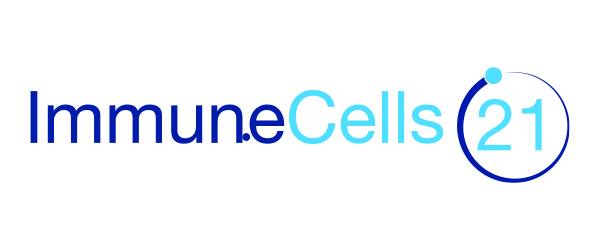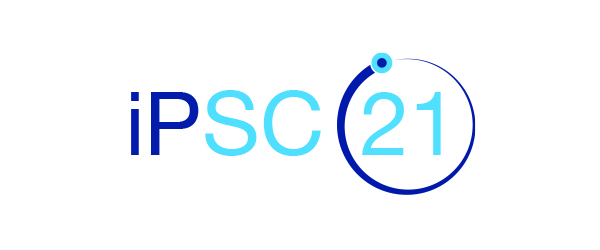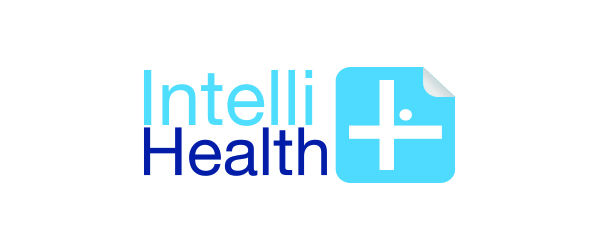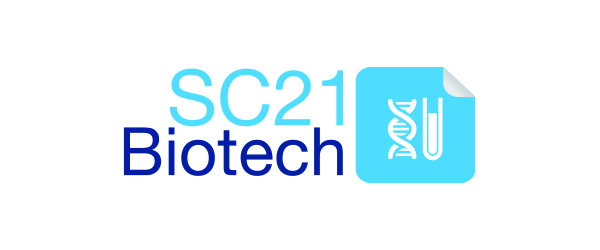Spinal Disorders: A Next-Generation Treatment Approach
Lower Pain. Increase Mobility. Regenerate Your Spine.
A New Treatment Delivering Uncommon Results
At StemCells21 we offer a new treatment to Spinal Disorders (SD) that delivers health outcomes that many did not know were possible.
Our treatment provides a more comprehensive SD treatment than conventional therapies offer. It provides critical components of SD treatment that conventional therapies miss, to directly target both the condition’s symptoms and the root causes of the condition.
By following this new approach, we have produced meaningful improvement for each of the SD patients we have treated. The improvements we have produced include, but are not limited to:


Regeneration of Spinal Structure and Function

Lowered Pain and Stiffness Levels

Improved Mobility and Flexibility

Cartilage and Disc Regrowth

Reduced Inflammation

Immune System Regulation

Reduced Medication Requirements

Muscular Strengthening
Continue reading to learn how our new approach to SD treatment produced these improvements, and how we might produce equivalent improvements for you or your loved one.
Understanding SD: A New Perspective
SD is an age-related degenerative disease that can manifest in multiple conditions, most of which involve the deterioration of spinal components including the vertebrae, the intervertebral discs, and the bundle of nerves forming the cord itself.
The exact causes of SD varies depending on the condition, and are unknown for certain conditions. However, most SD are correlated with the following causes:
- Age: Patients naturally increase their risk for SD as they grow older.
- Weakness: From a lack of support caused by underdeveloped core muscles.
- Heavy Lifting: From work or sport that involves excess strain on the lower back.
- Genetics: From a family history of spinal issues or other musculoskeletal disorders.
- Posture: From strain on the discs due to sitting too long or poor posture.
- Lifestyle: From Obesity, smoking (or other nicotine intake), and other factors.
No matter the exact cause of a patient’s SD condition—or the exact condition they express—most individuals find their SD will naturally progress and worsen over time. If untreated the underlying damage to the spinal tissues will increase, leading to pain, discomfort, and a loss of mobility. Eventually, the condition can progress and begin to negatively impact the functioning of other parts of the patient’s body.
In short: SD is a debilitating degenerative disorder that can only be effectively treated by regenerating the affected spinal tissue or nerves, repairing damage to any impacted bones, and restoring the healthy structure and functioning of the spine.
Unfortunately, conventional therapies are not able to address these underlying elements of SD and at best can mask its symptoms in the short-term.
The Fundamental Flaw in Conventional SD Therapies
There is no cure for SD, but there are a range of conventional therapies used to attempt to treat its conditions. These therapies include medications and physiotherapy that can help to alleviate symptoms, but do not treat the underlying condition nor repair the underlying damaged bones or tissue. Some of the medications prescribed include pain relievers, muscle relaxants, or even antidepressants—all of which can carry their own severe side effects.
In some advanced cases, patients may undergo surgery— often to either replace the vertebrae or discs with artificial materials, or to perform a spinal fusion (where the patient’s degenerated discs are removed, and the bones of the spine are fused together). These surgeries are invasive and unnatural. They do nothing to repair the damaged spinal bone, tissue, or nerves, and are not always effective at alleviating pain or improving mobility over the long term.
Clearly, a new approach to SD treatment is needed.


Our Approach to SD Treatment: What You Will Get
At StemCells21, we offer a regenerative approach to SD treatment. Our approach treats SD as the complex, degenerative condition that it is, and assists the body’s own ability to repair and regenerate spinal tissue, bones, and nerves that have degenerated due to the condition.
Our approach for SD treatment centers on the targeted administration of Mesenchymal Stem Cells (MSC). Properly administered stem cells can provide multiple benefits for SD.
Once administered, the cells will divide to replace old or damaged tissue, bone, and nerve cells, and contribute to the overall health of the spine as a whole.
Properly administered stem cells can provide multiple benefits for SD. They can:
- Migrate to the site of injury.
- Transform into new spinal tissue, bone, and nerves.
- Communicate with, and alter, nearby cells.
- Encourage existing damaged cells to self-repair.
- Regulate the immune system, and reduce inflammation.
- Increase production of synovial fluid and joint lubrication.
Our approach has produced partial or significant improvement to all of our patients’ conditions in a relatively short period of time. Depending on the stage of each patient’s condition, our approach has produced results either almost immediately, or within the first few months following treatment. For even the most challenging cases, we have produced improvement within six months of initial treatment.

Our Approach to SD Treatment: How It Works
We have developed a regenerative treatment for SD that centers on the targeted administration of Mesenchymal Stem Cells (MSCs).
Stem cell treatments offer the first SD treatment that is able to regrow the various tissues, bones, nerves by the condition, and regenerate the spine at the cellular level.
Our treatment introduces a flood of new, multipotent MSCs into the patient’s body, which perform the main therapeutic mechanism of repairing and regrowing the patient’s degenerated spine. The MSCs encourage differentiation into new disc cells, releasing a suite of growth factors to support the growth of new spinal tissue, and releasing anti-inflammatory secretions and modulating the immune system to prevent ongoing spinal damage.
We combine our MSCs with additional nutrition, RNA, and supportive therapies to give the necessary building blocks for the repair of both the spine and to any additional tissues, bones, or nerves damaged by the primary condition.
By combining these two MSC treatment with supportive therapies, our approach to SD treatment can target the underlying conditions and problematic tissues that cause SD, and give the body the biological components it needs to recreate healthy tissue. Our treatment supports the body’s own natural healing methods, and help to return the spine to a state of good health and normalized operations.
Over time, these therapeutic mechanisms improve the body’s functioning and impact the patient’s symptoms. Our patients typically experience a holistic improvement in their quality of life that includes more energy, lower medication requirements, and a greater sense of day-to-day wellbeing.
Here’s how it works.
Your SD Treatment Package
We create a customized treatment package for each of our patients. However, each of our treatment packages include a personalized combination of the following core components.
Component 1
Stem Cells
High-quality, multipotent stem cells that we will grow and deploy to help your body treat your condition.
Component 2
Supportive Therapies
Additional therapies we will leverage to focus your stem cells towards your condition’s specific treatment requirements.
Component 3
Take Home Set
Ongoing therapies that you will administer after your initial treatment, to ensure ongoing regeneration.
Core Component 1: Your Stem Cells
We organize our stem cell packages based on the size, complexity, and progression of your SD condition. Less progressed SD conditions require fewer stem cells to treat.
For SD patients who have begun to experience initial symptoms, but who have not yet experienced structural damage to their tissues, bones, and nerves, we typically recommend a minimum package of 100,000,000 stem cells.
For SD patients whose condition has created advanced levels of structural damage to the tissues, bones, and nerves, we recommend a larger dose of at least 200,000,000 stem cells.
However, any patient can opt for the largest possible package of stem cells. By increasing the volume of stem cells they receive beyond their minimum dosage, they will accelerate their healing and create conditions for quicker rates of repair.


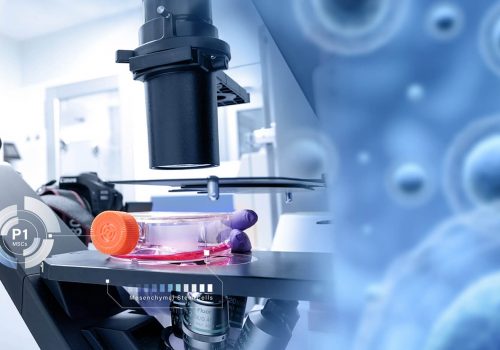
Core Component 2: Your Supportive Therapies
We select your supportive therapies based on your unique SD condition and needs, including how far it has progressed, what symptoms you are expressing, and which of your tissues have been damaged (and to what degree).
Once designed, your supportive therapies will direct your stem cells to the impacted tissue that need to be regenerated. There, they will trigger selective cell activity such as activating local regeneration, creating a healthier internal environment, and providing your body with additional biological components to deliver a faster and more complete regeneration.
For SD patients, our recommended supportive therapies typically include, but are not limited to:
- Vertebra, Intervertebral Disc, and Musculature RNA: To provide targeted biological building blocks for the core tissues damaged by SD.
- Para-Spinal & IV Laser Therapy: To create a more favorable microenvironment in the blood, and to stimulate local tissue activity.
- IV Oxygen Therapy: To increase blood oxygen levels and create healthier cells.
- IV Curcumin and Amino-Acids: To reduce SD-related inflammation.
- Physiotherapy, Shockwave, Ultrasound and Inversion Therapy: To restore mobility and functioning of the spine and musculoskeletal system.
Core Component 3: Your Take Home Set
We curate an additional set of simple supportive therapies that you will bring home with you after your treatment and self-administer for one to three months. This take home set prolongs and optimizes the therapeutic effect of your stem cell therapy, by providing ongoing signals and biological components to continue regeneration after your initial treatment.
For SD patients, our recommend take-home set typically includes, but are not limited to:
- Customized Nutrition & RNA Package: We design a unique nutrition package based on the results of your blood tests and designed to improve your core parameters.
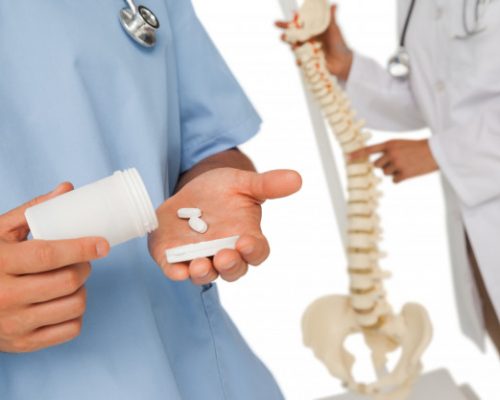
Your StemCells21 Treatment Experience
While we tailor each treatment to the unique needs of each patient, we will walk most patients through the following five steps.
Step 1
No-Obligation Consultation
First, we will conduct an in-depth consultation to define the right treatment package options for your condition. We will conduct your consultation either over the phone, over a video call, or in-person, depending on your desires. During your consultation, we will review your medical history, your medical evaluation form, and any other medical documents relevant to your condition. One of our doctors will review these documents with you, and recommend a range of appropriate treatment packages.
Step 2
Selection, Scheduling, and Arrangements
You will select the treatment package that you feel best meets your needs, and best aligns the level of investment you can commit. You will pay your upfront fee, and select the most convenient dates to schedule your treatment. From there, we will help you make arrangements for your travel to Bangkok— we will help you select your hotel or your residence for your stay, and we will arrange transportation to pick you up from the airport, and to take you to and from your lodging and our clinic.
Step 3
Initial Treatment
We will perform your initial treatment. On your first day, we will take vital measurements to benchmark your starting health status. Most initial treatment packages require three to six consecutive days of daily treatments each of which typically last two to three hours per day. This includes administration of both your stem cells, and your supportive therapies. On your last day, we will repeat your vital measurements, and review the progress you have already made.
Step 4
At-Home Treatment & Follow Ups
After you complete your initial treatment, you will return home. We will provide you with your take home set of therapeutic materials which you will administer on your own, and which will increase the effectiveness of your treatment over a defined time period. We will follow up with you at regular intervals—typically one week after you return home, then one month, three months, and six months later—to review your progress on your health outcomes, and plan any follow-up treatments required.
Step 5
Follow-Up Treatments (Condition Dependent)
Very simple treatments—involving a single area of focus on a simple type of tissue—may only require a single treatment. But most conditions require follow up treatments to continue to drive towards your health outcomes. Most conditions require follow-up treatments every six to twelve months, yet advanced or rapidly evolving conditions may require follow-up treatment ever two to three months. Any follow-up treatments you require will likely follow the same process as your initial treatment.
Our SD Patients: Conditions We Treat
We offer treatment to a wide range of SD patients, who have developed any of the most common conditions, including:
Develops when spontaneous cell death within the spinal discs (the spongy tissue between the vertebrae), or by the cartilaginous endplates in the spine failing to deliver sufficient nutrition for these cells. In both cases, disc tissue can degenerate, as can the annulus brosus (the outer casing of the disc), leading to nagging or severe pain in various positions and through different movements.
Also known as a bulged, slipped, or ruptured disc, develops when one or more disc pushes out of the annulus, and interfere with the functioning of any spinal nerves it contacts. This condition can cause pain in the back, arms, or legs, as well as tingling, numbness, and overall weakness of the spine and the surrounding muscles, leading to lack of mobility and physical capabilities.
Develops as the spaces within the spine narrow, placing pressure on the spinal cord’s nerves, and which can manifest in pain, tingling, numbness, or muscle weakness— all of which can increase over time. Spinal stenosis is most commonly caused by age-related wear-and-tear, or as a side effect of other conditions, such as Osteoarthritis (OA).
Develops due to degeneration of, and damage to, the sciatic nerve— a large nerve that travels from the lower back through the legs. If a patient with sciatica places pressure on this nerve—most often through normal movement and activity—they can cause substantial pain down the lower back, and through the legs, hips, and buttocks. Sciatica is most often a side effect of other spinal conditions.
In addition to patients with these specific conditions, we also provide treatment for patients who experience any of the many other less-common conditions related to spinal degeneration.
We organize our stem cell packages based on the size and complexity of your condition. Small, simple conditions require relatively few stem cells to treat them. Large, complicated conditions— or conditions you wish to treat as quickly and as completely as possible—will require larger volumes of stem cells to get the job done.
Our price for this treatment starts at $19.500 (US Dollar). The treatment duration is between 3-5 days depending on your specific condition.
Details | Treatment Type | Stem Cell Volume |
I | Single Area of Focus & Treatment | 50,000,000 stem cells |
II | Multiple Areas of Focus, Simple Inflammatory Conditions, or Early Stage Disease | 100,000,000 stem cells |
III | Complex Conditions or Premium Option for Simple Conditions | 200,000,000 stem cells |
IV | Advanced Stage Disease or Fastest Possible Treatment for All Conditions | 300,000,000+ stem cells |
We select your supportive therapies based on your condition. Your supportive therapies will direct your stem cells to the impacted tissue that needs to be regenerated, trigger selective cell activity, and provide your body with additional biological building blocks to deliver a faster and more complete regeneration.
We offer many supportive therapies, that include but are not limited to:
- Peptides & Messenger RNA
- Laser Blood Irradiation
- Laser Tissue Radiation
- Shockwave Therapy
- Ozone or Oxygenation
- NAD+
- Physiotherapy
- Nutrition & Enzymes
We curate an additional set of simple supportive therapies that you will bring home with you after your treatment, and self-administer for one to three months. This take home set ensures that your stem cells and your impacted tissue continue to receive direction and building blocks to continue to regenerate after your initial treatment.
We typically provide a one to three-month supply of:
- Compounded Nutrition
- Messenger RNA
- Growth Factors
Your SD Condition, Our Mission
No two SD patients are the same. While we have developed proven, targeted treatments for a wide range of SD expressions, we do not offer generic solutions to our patients’ unique set of issues, challenges, and opportunities for improvement to their quality of life. For each of our SD patients, we use our proven, targeted therapies as a foundation for care, which we then tailor to fit hand-in-glove with their unique needs.
In addition, we often design customized SD treatments for uncommon expressions of the condition not listed above, or for combinations of SD with other conditions that require a unique approach. We will consider any case—no matter how complex it might appear—and welcome the opportunity to find new ways to use stem cells to improve our patients’ quality of life.

Is StemCells21 the Right Provider for Your Treatment?
If you feel we might be able to offer meaningful improvement to both your condition and your quality of life, then please reach out to schedule a free consultation with one of our in-house clinical experts. We offer consultations with Native English Speakers, as well as Thai, Arabic, and Chinese speakers.
During your consultation, we will:
- Review your medical history & recent evaluations
- Explore what your treatment package might look like
- Share similar patient cases, and the outcomes we delivered
- Answer any questions you have about us, or stem cell therapy
- Discuss practical next steps, if you feel we can effectively treat you


